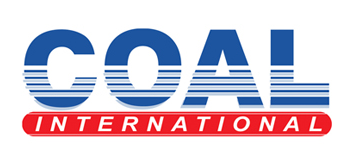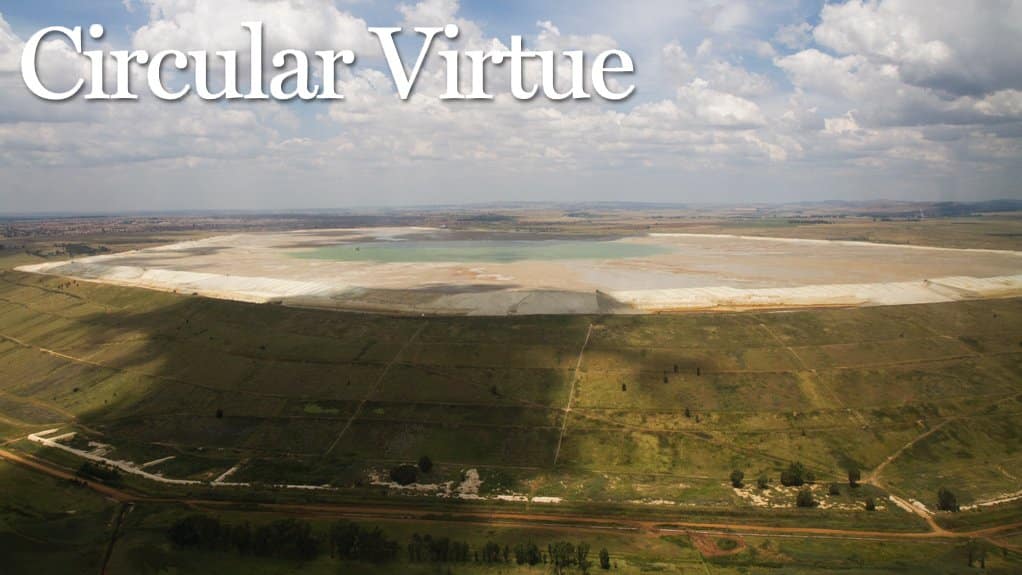While the viability of retreating mine tailings remains a key consideration – both for reprocessing these mining by-products and for determining the end use of any reclaimed land – it has nonetheless become a core component of modern mining.
Tailings reprocessing is closely linked to gold producer Harmony Gold’s environmental, social and governance (ESG) commitments, and the company aims to address the dual considerations of environmental risks and economic opportunities through these retreatment and rehabilitation initiatives, says Harmony Gold North West operations head of metallurgy Rollet Masakona.
“Reclaiming and relocating mining tailings to new well-designed and well-constructed facilities can enable the removal or reduction of the impacts on the groundwater system by removing the source of contamination,” he says.
This approach can support circular economy goals by recovering valuable minerals and making land available while mitigating long-term environmental risks.
The retreatment of tailings can also help to extend the life of a mine, which would enable the mine to sustain its economic contribution to the local and national economies for longer, thereby generating greater social and economic value for communities and mining companies, he adds.
While South African companies are keeping pace with or pulling ahead of international tailings management best practices, following changes in legislation, there is tension between what is required by the new regulations and what the objectives of the original design of a tailings storage facility were, says mine rehabilitation specialist company Agreenco director Fanus van Wyk.
Additionally, ESG considerations require that mines look even further ahead to determine the long-term impact of the tailings storage facility, he adds.
“Thirty years ago, it was sufficient to understand the geochemistry well and then place green covers (vegetation) on tailings facilities to ensure their geotechnical integrity.
“Now, however, designs need to ensure that the facility is protected from disintegration for 500 years to 1 000 years into the future and must consider whether reclamation or rehabilitation can create a landscape that is suitable for future land use.”
To address these challenges, the mining industry is using innovative solutions, with Agreenco involved in putting in place sustainable green covers, which have lower maintenance requirements and present a cost advantage to mines, says Van Wyk.
In terms of the final landscape following mining processes, brown (topsoil) or grey (rock) cover systems can be used to line the facilities, which, if the covers are designed properly, can allow for water to be stored and released on to the cover, with much less water entering the groundwater system.
Additionally, a well-designed cover system matches the erosion scenarios of the surrounding environment so that there is no net erosion in the environment and, therefore, less pollution, he adds.
“In terms of advancing cover systems, pricing and implementing them correctly, there has been a lot of innovation and a lot of progress made in understanding these over the past 30 to 40 years. Many companies have shown what can be achieved.”
Of the 400-odd tailings storage facilities in South Africa, only five or six use topsoil for cover systems. However, the local mining industry has learned a lot about these cover systems, notes Van Wyk.
Recently, geomorphic designs – which are aligned with or similar to the surrounding landscape – have become more prevalent, and such designs also reduce costs over time, although this approach is still in its nascent phase in South Africa.
From green covers, and using the mine’s water system for dust suppression, the industry has been moving to brown covers, and then sustainable surfaces, while ensuring the geotechnical integrity of the facilities, he adds.
Green covers, or vegetative layers – historically regarded as sufficient for closure – require long-term maintenance, as they battle to grow, owing to the presence of chemicals, requiring that companies re-vegetate the tailings storage facility, he says.
Ameliorating the impact of chemicals – for example, by removing pyrite and sulphates – reduces the risk of vegetative die-back, but presents its own challenges.
Further, the commercial viability of post- rehabilitation land use is a crucial consideration. For example, an agricultural system placed on rehabilitated land would need to generate sufficient revenue, serve as collateral for debt to be raised and be built into local economic value chains, emphasises Van Wyk.
Data from projects cultivating commercial crops on mined land shows that, while this can be done, it is uncompetitive price-wise, compared with conventional agriculture. For example, to improve disturbed soil to produce crops, a soil depth of 500 mm to 600 mm is required for sufficient moisture.
If the soil is not microbially active and moisture-rich, then it will be difficult, even for professional farmers, to sustainably farm such land.
Additionally, the data shows that it takes five to seven years for this type of rehabilitated land to stabilise and be at a development stage where the carbon and nitrogen cycles can sustain healthy root systems.
To get soil organically rich increases costs and, while irrigation and adaptable plants can be introduced, this approach must make commercial sense to be sustainable, says Van Wyk.
Rehabilitated Land Use
Harmony Gold, at its operations near Klerksdorp, in the North West province, is reprocessing tailings covering about 1 800 ha of land. It aims to reduce this to 900 ha by building smaller, but taller, tailings dams that are well engineered, thereby freeing up land for other uses, says Masakona.
He adds that rehabilitated land increases post-mining opportunities, such as hosting solar PV or wind power plants or planting crops to produce biofuels, which can generate additional social and economic value, and help to sustain communities beyond mining.
One of Harmony Gold’s remining initiatives near its Free State operations has created 500 direct and indirect jobs, engaged 25 local suppliers and service providers, and generated R130-million in yearly profits.
Part of the revenue from the remining operation is channelled into development trusts, which are helping the communities to advance other nonmining activities.
Additionally, at the company’s North West operations, specifically near its Kareerand remining and rehabilitation operation, the land has been successfully rehabilitated and repurposed for additional livestock grazing, notes Masakona.
The Kareerand operation also focuses on ensuring that the future soil covers of these tailings storage facilities can support post- mining commercial uses.
Typically, only about 300 mm of soil is needed to cover a tailings storage facility; however, the company is digging to a greater depth, down to about 1 m. It is also preserving the topsoil, which will be used later to cover the tailings and provide the necessary depth to ensure plant growth and other commercial agricultural uses, he adds.
The retreatment and rehabilitation of tailings storage facilities can make new land available for use and, for some mines, tailings become a resource, hence the need to consider what to do with such resources in the future, says consulting engineering firm Knight Piésold Southern Africa director Andries Strauss.
International Standards
Prompted by several major tailings storage facility failures worldwide – including the Brumadinho tailings dam collapse, in Brazil, in 2019, and the failure of the tailings dam in Jagersfontein, in the Free State, in 2022 – the Global Industry Standard on Tailings Management (GISTM) was published.
This is the global standard the companies aim to comply with, and it addresses some novel aspects, such as zero-tailings mines or limited footprints and limited water use while creating robust designs, says Strauss.
Additionally, the GISTM addresses alternative uses for tailings, such as rehabilitating openpit mines or storing tailings underground, which can help with subsidence. However, the specifics of such initiatives vary, and underground tailings storage can cause pollution.
As long as these approaches are environment friendly, properly permitted and designed correctly, then storing tailings underground or using them to rehabilitate an openpit mine is a better option than storing them on the surface.
However, even if tailings can safely be used for backfilling underground, only about 65% of gold mining tailings, for example, could be placed in underground voids, leaving the remaining 35% to be stored above ground, Van Wyk adds.
Meanwhile, Harmony Gold does not place tailings underground, using only the minimum necessary for backfilling. These go through strict processes to ensure that they do not contaminate the underground environment, notes Masakona.
“However, if we want to create land that can be part of a functional economy in the future, then we need to ensure the geotechnical stability of the facility. If we can design out the risk, then the land can be reintegrated back into the surrounding environment and used for economic activities,” says Van Wyk.
For example, in Zambia, wind turbines have been placed on rehabilitated tailings storage facilities, with a buyer for the power generated by this plant, which generates a sustainable revenue stream, he highlights.
“Only if an initiative for the use of post- mining land is commercially viable can it be considered sustainable,” he says.
These views were expressed by mining and geological experts during the ‘Mine tailings success stories and benefits of well-managed land rehabilitation’ webinar, hosted by Creamer Media earlier this month.



